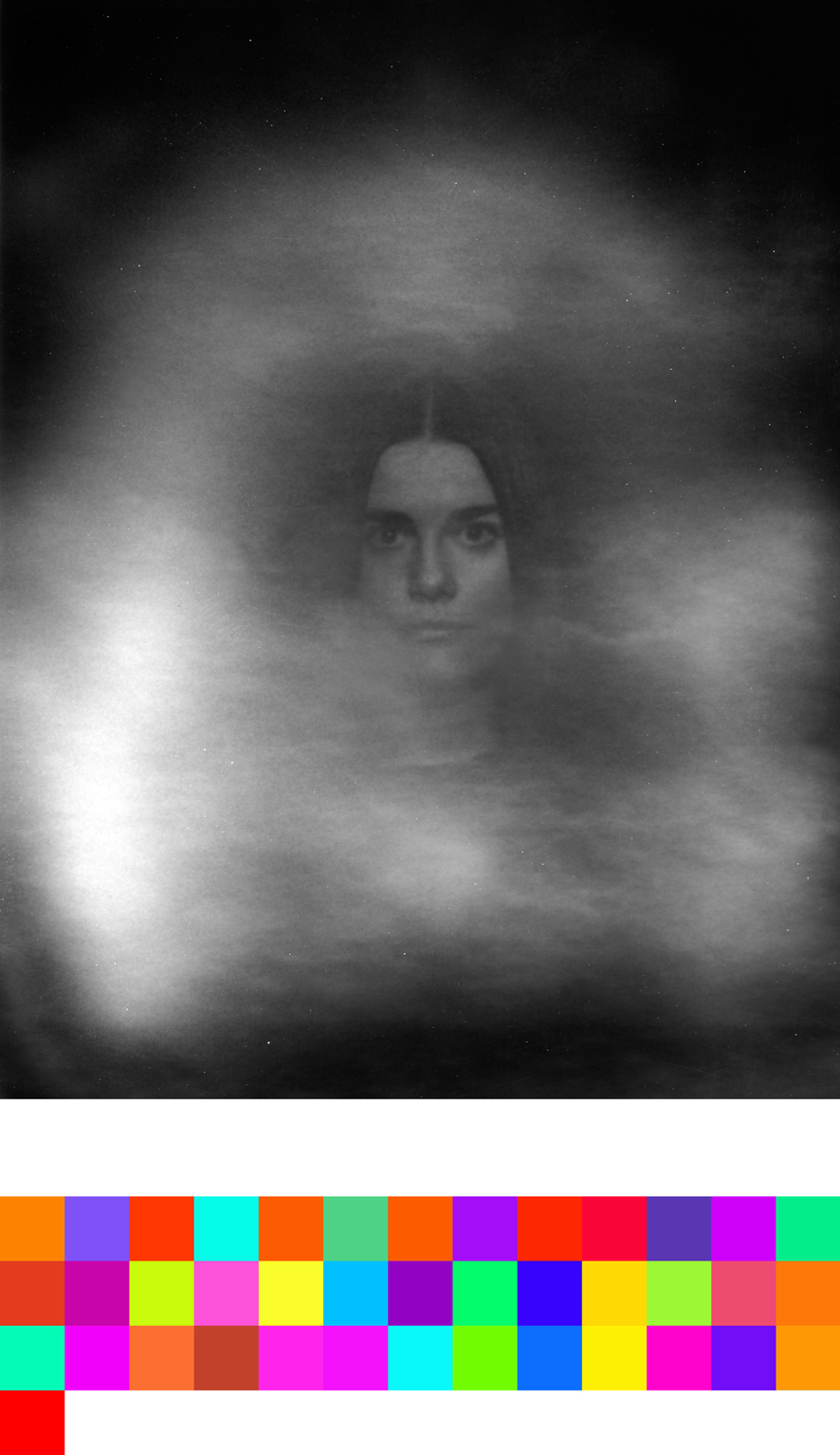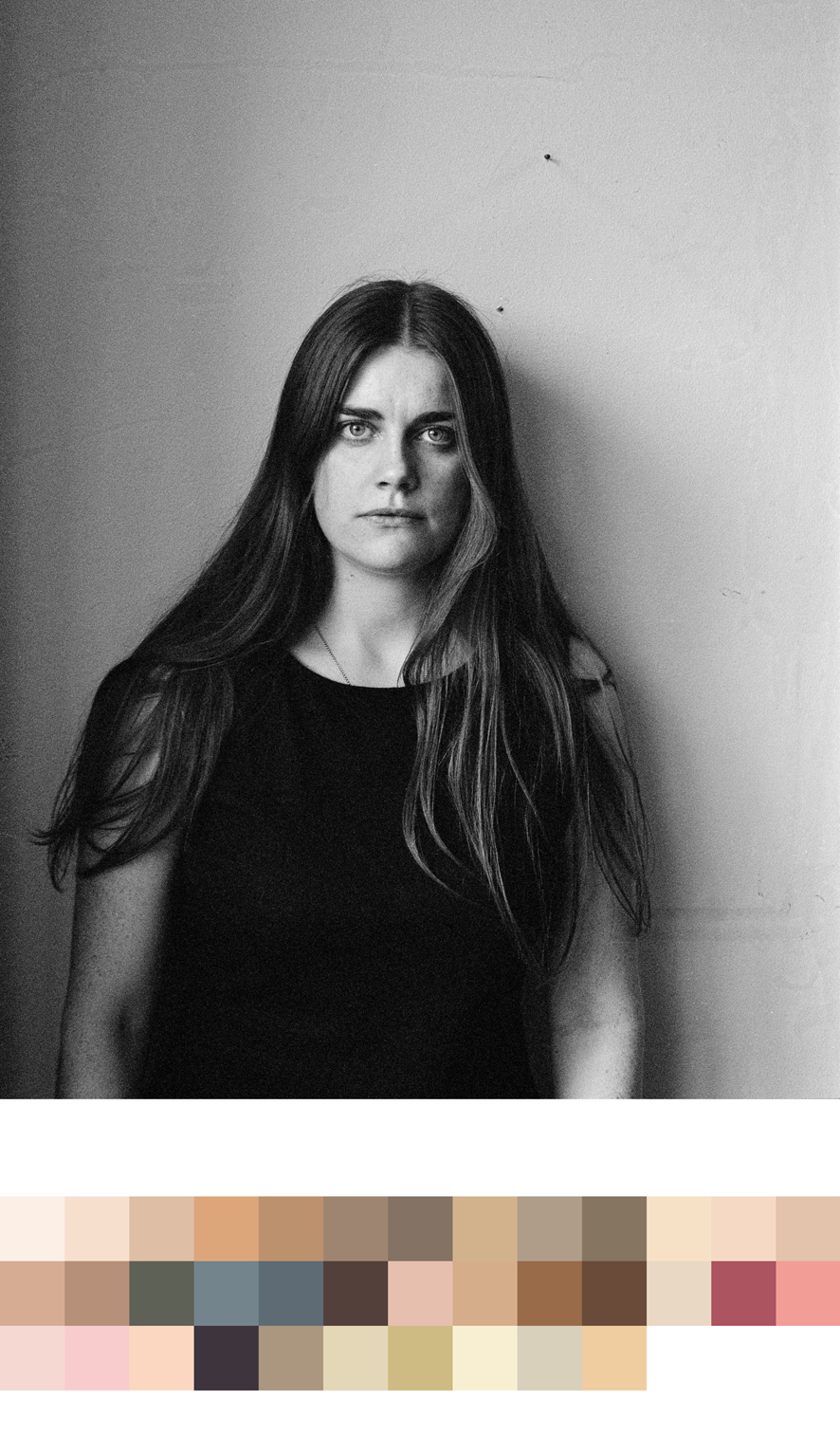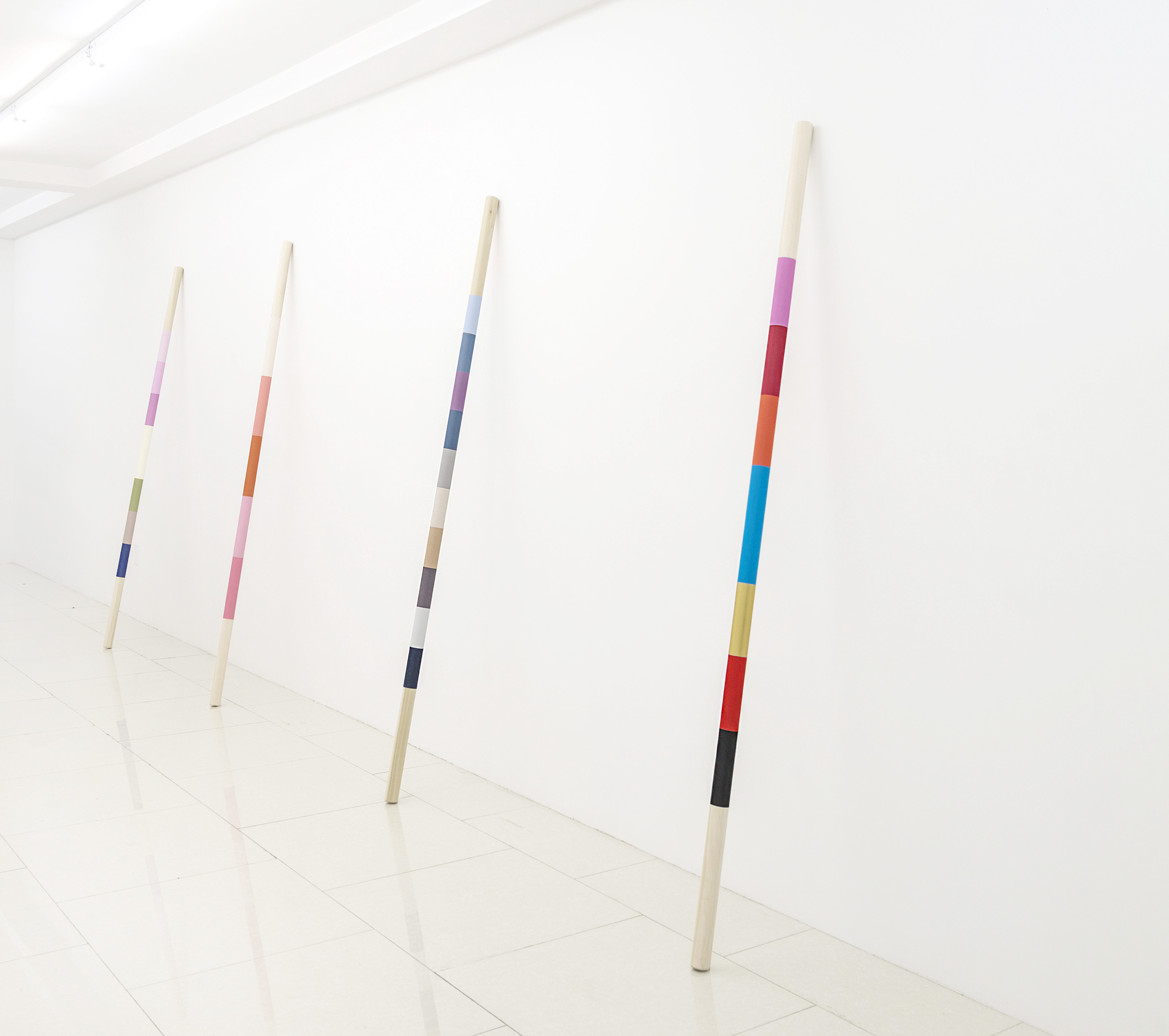If your colors were like my dream
Solo exhibition in Rawson Projects
New York 2015
As this is your first solo exhibition with the gallery, perhaps you could talk a little bit about your work and the direction it has taken recently. The gallery first presented your work in a group show at the gallery entitled the Balloon. Included were three, hand-painted pigment prints of a boat on the Reykjavik Harbor and an accompanying sound sculpture of sounds from the harbor. I was struck by how you could manipulate seemingly every day, albeit beautiful, images and sounds into something more mysterious and otherworldly. In that way, the work became more about your intervention than the actual event itself. Do you agree? Would you say this new body of work represents an extension of those ideas? What has changed?
As a visual artist I have worked in sound, sculpture, drawing, video, and performance, but photography has always been my primary medium. In my exhibition 40-42 Degrees in 2014, I was portraying the rainbow in black and white images, something you never imagine, a rainbow is in everyone’s mind the definition of colorful. I was intrigued by the image of the rainbow in black and white. It is a strange streak of light when you strip away the colors. I then tried to retrieve and categorize those colors of the black and white rainbow and displayed it in a palette underneath the images. It was, in a sense, my attempt to dissect the tendency and human desire to capture, reproduce, arrange and categorize nature. I do agree that my work is a form of intervention. I like the process and where it leads me.
For this exhibition, I am continuing to think about colors and how we perceive them. Specifically, I am working with the idea of color analysis - a very 80s phenomenon - having my own color palette analyzed. Similar to the rainbow works, I am working with the hidden or true colors in black and white pictures, this time with images of myself. I am still working with the presence and non-presence of colors. People are obsessed with colors and appearance, which colors do and do not suit us. There was a whole industry dedicated to personalized color advice, and I sought out people who are still providing this service. I also had a picture taken of my aura - something that is hidden or invisible. Regardless of what one thinks of auras, the camera does capture something. Whether it is the heat coming from my body, or the way it picks up light, the process produces an image with a lot of strong colors. In a way the aura photograph relates to the picture of the rainbow. Rainbows are so mysterious, they appear and disappear, they are otherworldly, and, in mythology, they are often the gateway from this world to another.
That's interesting. For me, the palettes at the bottom of the images were very much an illustration of our tendency to organize what we see into discrete categories. That tendency has become an ever more pervasive part of our culture with the proliferation of digital technology. But, as you said, despite that technology, we still ascribe a sort of spiritual power to color. Ironically, you seem to draw more attention to it by removing it from the actual images themselves. Do you think that this spirituality is lost or diminished with contemporary technology (i.e., camera, smart phone, internet)?
Shooting on film seems like a novelty reserved for grandparents and hipsters. It is an interesting question if it is still relevant in the digital world we live in today. Working with digital cameras, I am in total control. It’s a neutral object to me. Working with film, however, is having an interactive relationship. It’s a dialogue. The Pentax camera I work with has her own opinion. I shoot something, and then the result is a mystery. The camera takes on a sort of life of its own because she has a say in what the picture will look like. For me, that makes all the difference. The goal of contemporary digital technology is to transfer the world as realistically as possible from the realm of the real into the computer. The “magic” or “spirit” can get lost with digitization. Its pure mimesis lacks the organic and often unpredictable quality of film.
The digital picture was rather flat in the beginning when the technology was still rather primitive. But by mimicking the feel of the film with Instagram filters and Photoshop manipulation, the images now appear to have more texture and authenticity. It’s ironic that we have developed technology to give us the nostalgic feeling of film. One of the worst qualities a digital camera can have is poor resolution, but with film the same issue is also one of the best things about it - the grain. Instagram and Facebook images now have more personality, but they lack authenticity. You sense its shallowness. It is an emblem of contemporary popular culture that is constantly recycling and regurgitating itself.





